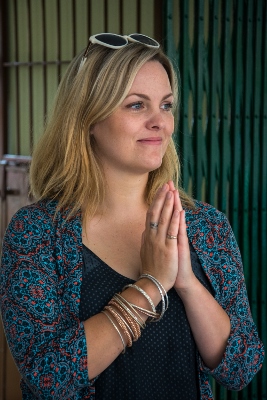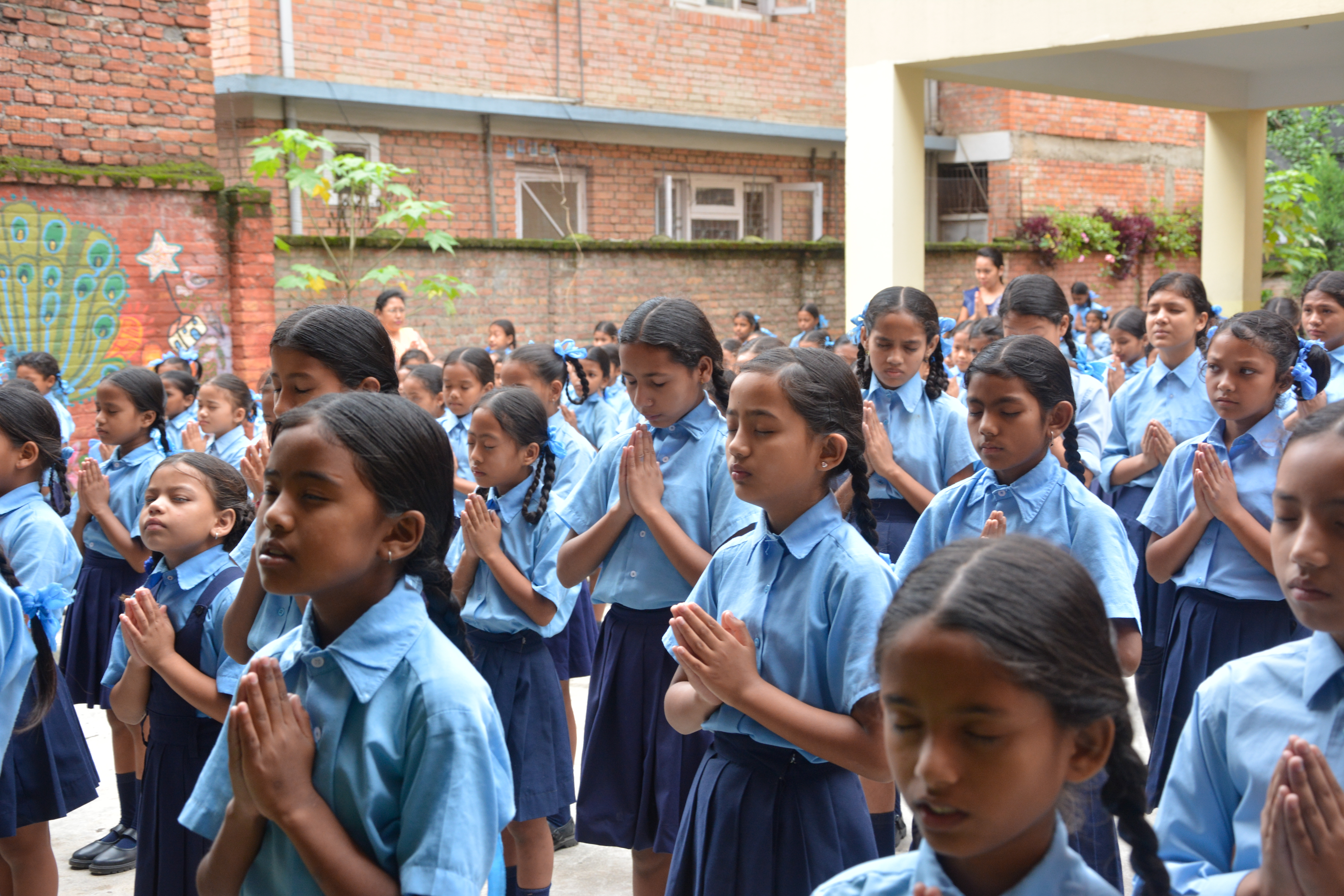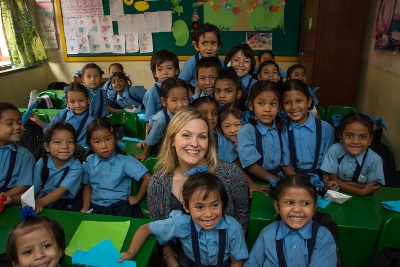Jo Joyner’s visit to Nepal: Part 3

About the author: Jo Joyner is an award-winning actress and CAFOD supporter whose work includes No Angels, EastEnders, Ordinary Lies and The Interceptor. In July 2015, Jo travelled to Nepal where she met communities who were severely affected by the devastating earthquakes and saw how crucial the work of CAFOD’s local partners had been in providing life-saving aid. In the third of three blogs, Jo writes about her experience. Read Jo’s first and second blogs.
Many of Nepal’s schools were decimated by the earthquakes and for safety reasons the government put a hold on all school attendance for a month. This was to give the authorities time to visit those schools that were still standing but fractured, to give them the official stamp from the engineers and approve them as safe enough to house the nation’s young minds.
People I met told me that there was relief that the initial earthquake happened on a Saturday because this meant that many of the children were either outside playing or working in the fields. Open space is the safest place to be when there is an earthquake and looking at the rubble of a school in the heart of the old town of Kathmandu, I shuddered at the thought of that massive earthquake happening during the week, when families were separated and the schools were full.
Donate to our Nepal Earthquake Appeal
A sanctuary amongst the ruin
We visited Mary Ward School in Kathmandu, which Caritas Nepal has been supporting for more than ten years. The girls at the school are the daughters of migrant workers from the countryside who have come to the city from rural villages.

The school is run by Sister Asha – whose name fittingly means ‘hope’. She has worked across South Asia for a lot of her formidable career, and when I asked her which country she preferred to work in, she replied sincerely, “I prefer to be where I am needed. I have God in my heart and do good work. So wherever I am, I am happy”.
The school is a sanctuary off a bustling, broken, dusty road. When the school’s iron-gates close the peaceful, plant-draped courtyard of Mary Ward School wraps its knowledgeable bricks around you.
We were greeted on arrival by an entire playground of immaculate students. I was instantly ashamed at the dishevelled state my twins are often in when they are thrown through the school gates – always late despite living on the doorstep. The students of this school were stood silently with radiant smiles, in pristine shirts and double plaits. They were proud. Proud to be dressed smartly. Proud to be clean and washed. Proud and hungry to once again be allowed to learn, read, write, sing and dance.
Find out about CAFOD’s work in Nepal
Makeshift campsites
When the earthquake hit the school was closed. Most of the girls came from the poorest areas of town and lived in the oldest or weakest buildings and so many of them were left homeless. People were afraid that there would be aftershocks, so instead of returning to what was left of their homes, they slept outside. The city’s open spaces – the stadium and parks – soon became makeshift campsites. Can you imagine Wembley Stadium full? Rows of tents covering Hyde Park or Hampstead Heath? That’s what happened in Kathmandu.

Over the next few days more than 30 families came to Sister Asha to ask for help because they had nothing left – no food and no shelter. She provided them with tarpaulins and was also able to make the free school meals provided by Caritas Nepal stretch to feed many more mouths.
When the school reopened a month later Sister Asha declared that there would be no formal lessons for the first few weeks. Instead there were workshops involving art therapy, music and drama. These gave the girls an opportunity to talk about what they had experienced, to share their stories and to feel supported.
Too scared to sleep
Laxmi, 11, told me that she was in her room when the earthquake hit. She said her first thought was, “Is my mother alive, what if my mother is dead?” She grabbed her two younger brothers and carried them out of the building. Laxmi is tiny – she is the size of my 7-year-old niece – yet the thought of her carrying her brothers is something I can believe. Laxmi and her family slept in the city stadium for the next 16 days. She told me she doesn’t sleep well now.
Laxmi started to feel like things could go back to normality, but just as she dropped her guard, the second quake hit. Telling someone like Laxmi that they’re lucky to be alive, that if they can survive two earthquakes they’ll be alright, that it won’t happen again for another 80 years, just won’t cut it. I didn’t know what to say to this little girl to make her stop worrying. I’m not sure anything ever could.
Our last afternoon in Nepal was spent walking around the old part of Kathmandu, seeing the stadium and parks which – months on – still have many tents erected and washing hanging out to dry along the fences.
The old town has narrow streets and alleyways, some barely wide enough for two people to walk side-by-side and once you’re in the very heart of it staring up at the five floors above you, you truly understand Laxmi’s fear and why she can no longer sleep at night.
Beautiful temples and wonderful people

A friend of mine who knew I was travelling to Nepal had said, “It’s amazing, you’ll love it, such beautiful temples and wonderful people”. I wonder if she would recognise it now. I can tell from the way her face lit up at the thought of the memories she’d made in Nepal, that Kathmandu was a shadow of the city which had formed such a magical part of her time travelling.
It may be over three months since the earthquakes hit, but it’s important that we don’t forget the many people who are still in urgent need. It will take years for Nepal to recover completely and the scars brought about by the earthquake run deep. With the help of organisations like CAFOD and Caritas Nepal, as well as hundreds of other charities and the Nepali government, however, there is no reason why this beautiful, hopeful and proud country cannot be rebuilt.
Donate to our Nepal Earthquake Appeal online or call 0500 85 88 85
Photos: CAFOD/Bikash Khadge
One thought on “Jo Joyner’s visit to Nepal: Part 3”